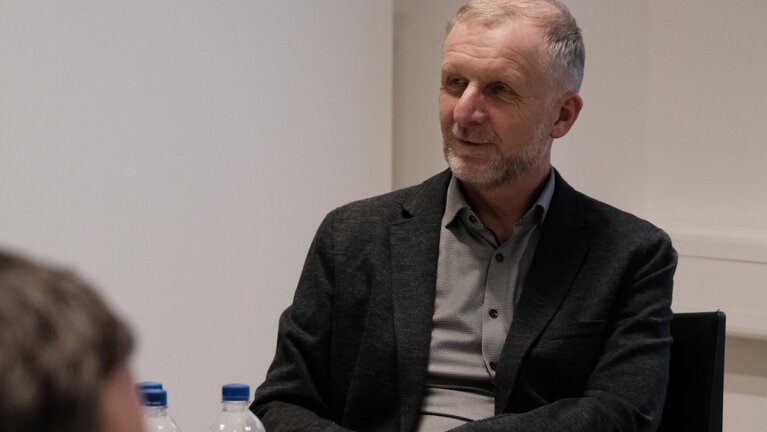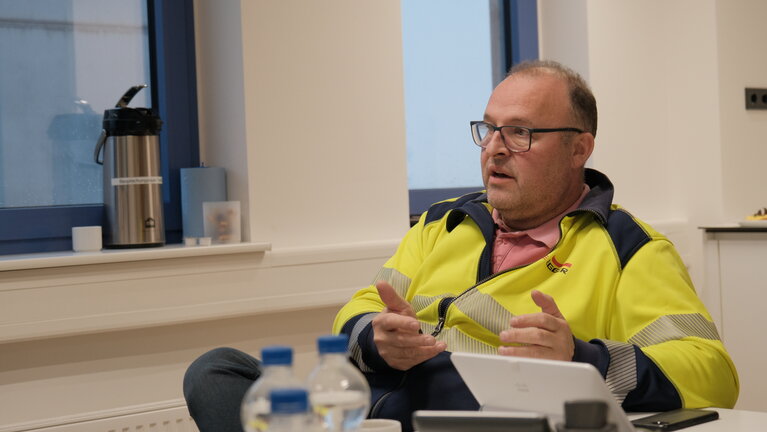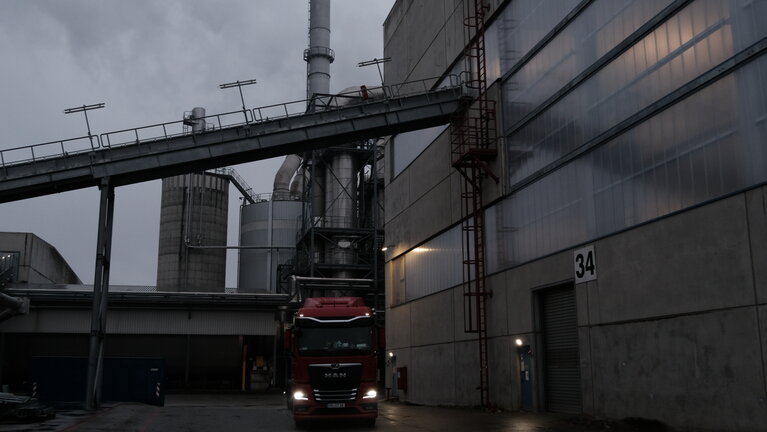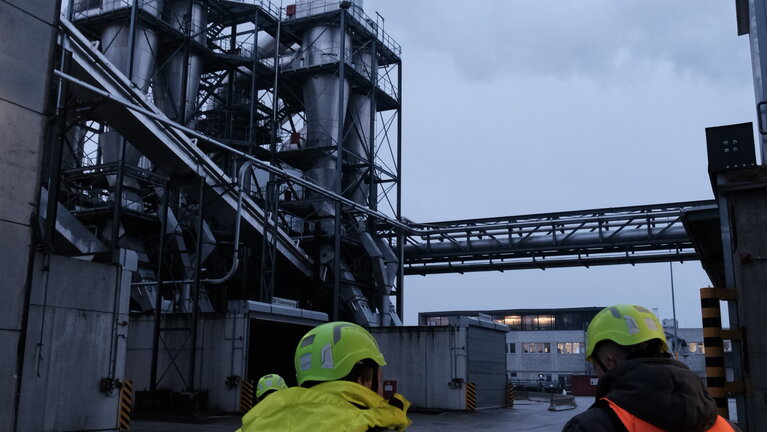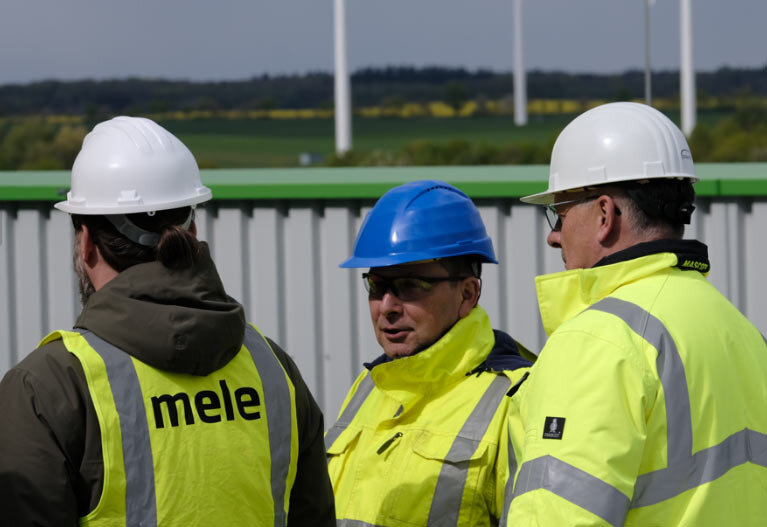- Exchange of expertise on the topic of reducing emissions using urea solution -
Since 1999, EGGER has been operating one of the most modern production sites for wood-based materials in Wismar. With around 1,000 employees on an area of over 90 hectares, the company is one of the largest employers in the region. MDF, HDF and OSB boards as well as high-quality flooring and building products are produced here.
Every year, around 50 ships, 2,000 rail cars and 15,000 trucks arrive at the plant with wood – 100% from sustainable forestry and 90% from Germany. Sustainability plays a central role: the company's own biomass power plant generates electricity for around 23,000 households. Every month, 3,000 tons of wood dust, among other things, are converted into energy, and biomass such as bark is used to generate steam for production.
An exchange of expertise together with our enviMV members Dornier and Construction Service GmbH (Ms. Groth) and BLS Energieplan GmbH (Mr. Kost) as well as the managing director (Mr. Goll) and the head of operational monitoring (Dr. Feist), of the Rostock refuse-derived fuel (RDF) power plant - Vattenfall Europe New Energy Ecopower GmbH, served the intensive exchange on the topic of emission reduction using urea solution.
The production of wood-based materials requires binders. For this purpose, the EGGER plant in Wismar produces up to 400,000 tons of urea binder per year in its own glue factory. Among other things, urea is used for this, which is further processed into urea resins in the glue production. Another part is used as a urea solution in the power plant for flue gas denitrification, a common method for cleaning flue gases in power plants.
Urea is used to reduce nitrogen oxides (NOx) in exhaust gases. Nitrogen oxides are produced when fossil fuels such as coal, gas or oil are burned and contribute to air pollution and acid rain.
Selective Catalytic Reduction (SCR) or Selective Non-Catalytic Reduction (SNCR) involves injecting urea into the hot exhaust gas. There it decomposes into ammonia, which reacts with the nitrogen oxides, converting them into harmless nitrogen (N₂) and water (H₂O).
In short: Urea helps to reduce harmful emissions from power plants and to minimize environmental pollution!
This is one of many issues that power plant operators constantly have to deal with to ensure smooth operation.
Many thanks to Mr. Steinhagen, Mr. Hacker and Mr. Hawrylak for the valuable insights and exciting information during this exchange.


